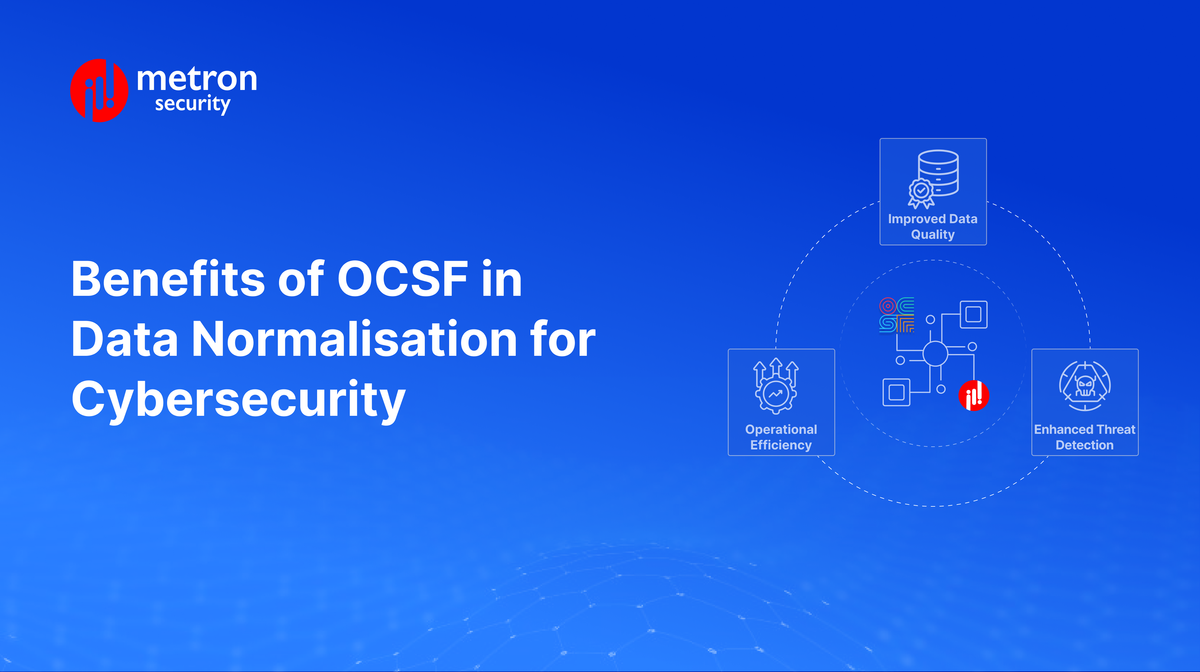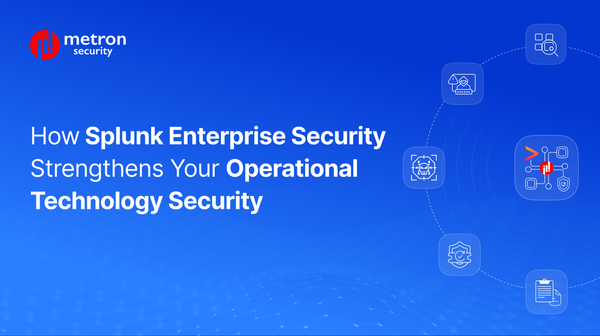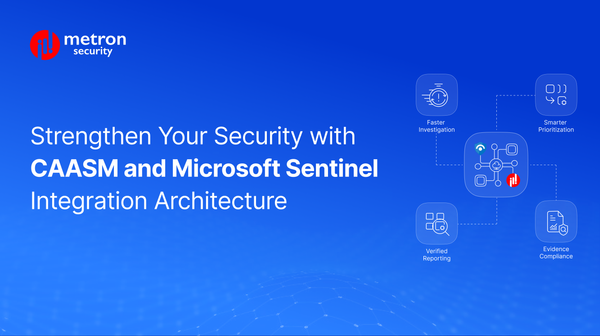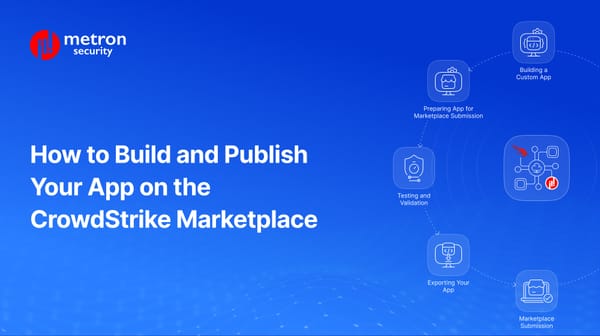Benefits of OCSF in Data Normalisation for Cybersecurity
Discover how the OSCF framework benefits your data normalization processes.
Anmol Jain

Unveiling the Benefits of OCSF in Data Normalisation for Cybersecurity
In the rapidly evolving world of cybersecurity, organizations are frequently confronted with the challenges of managing huge quantities of security data from various sources. It’s not uncommon, after all, for organizations to rely on dozens if not hundreds of separate applications and platforms in their larger technology stack, many of which rely on separate data frameworks.
As you may be aware, varying data formats and structures has the potential to cause serious problems concerning threat detection, response, and managing information. Thankfully, OCSF (or the Open Cybersecurity Schema Framework) provides an open-source, vendor-neutral framework that aims to create consistencies in cyber security data.
In the following article, we will cover the essential benefits of OCSF in normalizing data and seek to preemptively answer any of the questions that you might have about adopting this schema.
Understanding OCSF and Data Normalisation
OCSF aims to develop a standardized schema for cybersecurity data that enables integration and correlation across different tools and platforms. It ensures that information from diverse sources is put into a shared format through data normalization in order to make it easy to analyze threats or respond to them across applications.
Technical Implementation
How does OCSF handle data normalization from diverse data sources?
OCSF is built using a robust schema that defines the common format for cybersecurity-related information. This schema includes specific field definitions, data types, and structures that can hold logs, events, and alerts from different sources. By putting together this normalized schema through mapping disparate systems’ data into one place; OCSF makes normalization simple and effective.
Implementation Example:
Let’s look at an example where a company uses a SIEM system, an endpoint detection and response (EDR) solution, and a network monitoring tool as their security tools. Each of these generates data in a separate format, causing either an inability to share data across platforms easily or requiring extensive work bridging the two formats.
For instance, our SIEM system will record a successful login and the details such as the timestamp of the event, the user’s name, status, and source IP address. On the other hand, an EDR solution may log a file modification by the same user denoting the file name, action taken on it, and time of modification. At that very moment, a network monitoring tool records intrusion attempts originating from certain IP addresses towards some other IP addresses together with alerts or warnings about its level of intensity.
This is where the organizations can incorporate OCSF into their data pipeline, allowing data from multiple sources to be uniform, making analysis easy, and providing a unified view of the organization’s security posture.
By implementing OCSF, the schema will instead condense the different sets of data into one set of details that contain important parts from each tool but are presented in a common schema. The end result comprises one universal date attached to any incident out of the three categories plus multiple specific types like user info; network alerts during file manipulations or even hostname/IP address pairs.
What are the prerequisites for adopting OCSF in an existing cybersecurity infrastructure?
To implement OCSF, there are a few key elements that organizations need to keep in mind. Some of these include:
- Technical Expertise: Knowledge of data schemas, data mapping, and cybersecurity operations is crucial for implementing the data normalization schema.
- Resources: Your team will need developer-level access to development and integration tools to map existing data sources to the OCSF schema.
- Tool Compatibility: The ability to determine whether current tools or platforms in your repertoire can work with OCSF or if they will require extensive customization.
Benefits and Outcomes of Integrating with OCSF
What specific benefits have organizations observed after adopting OCSF for data normalization?
Organizations that have adopted OCSF have seen numerous tangible benefits (which we’ve previously written about). Among them are the following:
- Improved Data Quality: Consistent data formats lead to higher data quality and fewer errors during analysis.
- Enhanced Threat Detection: Normalized data that allows for a more effective correlation of events, leading to quicker identification of threats.
- Operational Efficiency: A reduced need for custom data integrations which lowers operational costs and simplifies data management processes.
How does OCSF improve interoperability between different cybersecurity tools and platforms?
OCSF provides interoperability enhancement through a common security language. This makes it possible for the efficient flow of information from one tool to another, thus enabling effective cooperation and integration between them. With this interoperability, there can be a cohesive security ecosystem where different tools become complementary rather than siloed.
What impact does OCSF have on the speed and accuracy of threat detection and response?
OCSF eliminates the delays that are often witnessed while transforming and interpreting data manually through data normalization. Event correlation among various sources results in quicker and more precise threat discovery. For example, one benefit is a decreased mean time to detect (MTTD) as well as mean time to respond (MTTR) to security incidents.
How flexible is OCSF in terms of customization for specific organizational needs?
OCSF is designed to be highly extensible. For the purpose of meeting their requirements, organizations are free to customize and include custom fields in the base schema. This flexibility ensures that OCSF can adapt to various use cases without compromising its core functionality.
Additionally, it is also possible to maintain custom extensions for specific use cases. These can also be added to public releases.
Possible Customizations:
- Industry-Specific Fields: Depending on your situation, it may be beneficial or even essential to add industry-specific fields, such as the case of healthcare or finance. For example,
- In healthcare, fields like patientID, MRN, etc may be required, unlike in other industries.
- In finance, you may include fields like account number, risk score, and other information that may not be valid for anyone apart from the ones in the finance industry.
What are the integration challenges associated with adopting OCSF?
As versatile as OSCF is as a schema, it does not come without challenges. Depending on your situation, you may face certain integration issues with OCSF when developing in-house:
- Data Mapping Complexity: Mapping existing data to the OCSF schema can be complex and time-consuming - particularly for developers who are not specialized in the schema or integrations in general.
- Compatibility Issues: Ensuring all tools and systems can interface with the OCSF schema may require additional development work, which again could require extensive monitoring if your in-house team lacks experience with these processes.
- Maturity: OCSF is continuously evolving, which means the data may not be mapped 100% to the existing classes and it may have to be extended. In cases such as this, it is often beneficial to work with a third-party tool or provider that monitors platform and version changes.
How does OCSF align with other industry standards and frameworks?
OCSF is designed with a view of complementing other industry standards and frameworks. These efforts will ensure that there is alignment and collaboration with initiatives such as MITRE ATT&CK and others, hence promoting a cohesive cybersecurity approach.
Conclusion
The Open Cybersecurity Schema Framework (OCSF) provides an effective solution to the issue of data normalization within cyber security. OCSF enhances interoperability, eases compliance, and enriches threat detection and response by standardizing data formats. It offers numerous, powerful benefits for organizations that rely on complex, multi-tool playbooks. Nevertheless, implementing the schema may require additional time and resources should you go in-house with the deployment process. As such, it can often be advisable to work with a third-party integration expert or ensure that your team is properly briefed on the additional tasks and responsibilities that might arise during the adoption phase.
If you are looking to set up any integrations with the OCSF Schema and are facing challenges, you can contact us at connect@metronlabs.com. Metron is a contributor to the OCSF framework and a trusted development partner for many of the industry’s leading providers.









